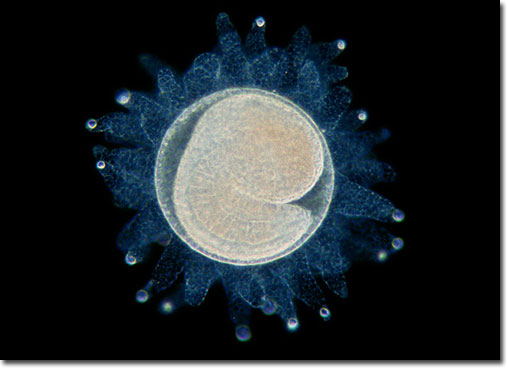|
It is in the larval form that tunicates reveal their ancient relationship to humans and other vertebrates. During this brief stage of life, the developing organisms exhibit a sort of primitive, flexible backbone called a notochord. Also, a nerve cord runs down their relatively long, muscular tails, which help propel them through their aquatic environment once they are released from their eggs. Gravity and light-sensing vesicles are also present in the larval stage, providing important information regarding orientation to the tadpole-shaped organisms. Their purpose at this point in the life cycle, however, is not to find food, but rather a suitable location for metamorphosis. During this form-changing process, the larval tail is resorbed as a food source and the notochord is lost.
|
